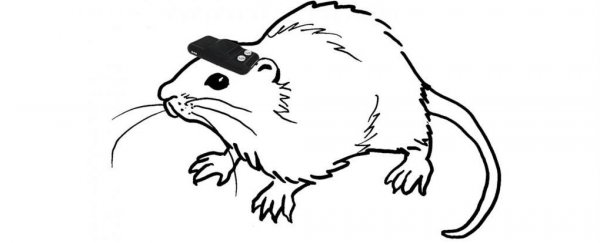Blind rats with a sensor and a compass attached to their brains were able to navigate through a maze nearly as well as rats with regular vision, a new study has found.
The findings suggest that neuroprosthetic devices could one day be developed to help blind people better sense their environment, and navigate independently.
Interestingly, the researchers from the University of Tokyo, Japan didn't set out to restore normal vision in their rat subjects.
Instead, the team was interested in enhancing something known as allocentric sense. This is basically how humans and animals recognise the positions of their bodies in relation to their spatial surroundings.
The researchers developed a small, head-mounted geomagnetic sensor that connected a small digital compass - not unlike those found in smartphones - to two microelectrodes.
These were implanted into the visual cortices - the region of the brain responsible for processing visual information - of rats whose eyelids had been sewn shut to simulate blindness.
When the rats moved their heads, the sensors generated electrical impulses telling them which direction they were facing. The rats were then trained to locate food pellets inside T-shaped and more complicated mazes.
It didn't take long for the blind rats to begin making sense of the geomagnetic signals stimulating their brains. After only a couple of days, and a few dozen experiments, the researchers say their blind rats were solving the mazes almost as swiftly as seeing rats, and were employing similar navigation strategies. They have reported their findings in Current Biology.
"We were surprised that rats can comprehend a new sense that had never been experienced or explained by anybody, and can learn to use it in behavioural tasks within only two to three days," said co-author and pharmacologist, Yuji Ikegaya, in a press release.
If we can temporarily forgive the researchers for sewing together the eyelids of these poor rats, we can applaud this very cool research, which highlights the ability of the brain to adapt and use new, never-before-experienced information, to better understand its environment.
"The most remarkable point of this paper is to show the potential, or the latent ability, of the brain," said Ikegaya.
"We demonstrated that the mammalian brain is flexible even in adulthood - enough to adaptively incorporate a novel, never-experienced, non-inherent modality into the pre-existing information sources."
Importantly, the researchers say it could enable people suffering vision loss to regain more independence.
"The most plausible application is to attach a geomagnetic sensor to a cane so that the blind can know the direction via tactile signals such as vibration," Ikegaya, wrote in an email to Douglas Quenqua at The New York Times.
Source: The New York Times
